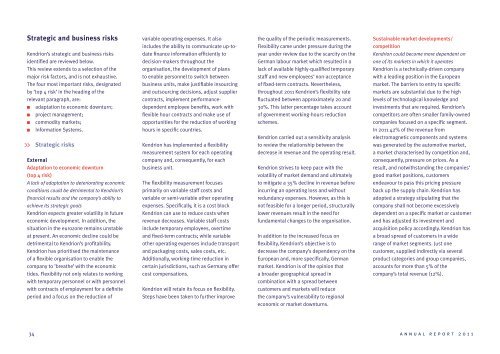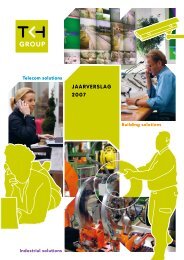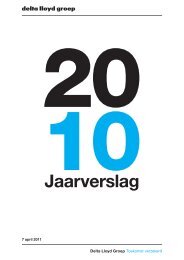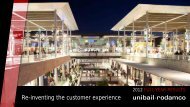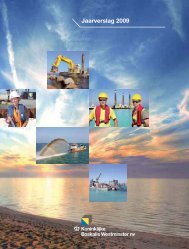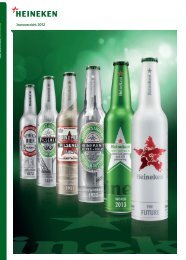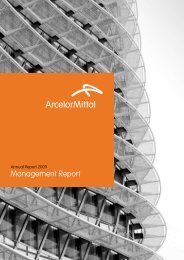annual report - Kendrion
annual report - Kendrion
annual report - Kendrion
Create successful ePaper yourself
Turn your PDF publications into a flip-book with our unique Google optimized e-Paper software.
Strategic and business risks<br />
<strong>Kendrion</strong>’s strategic and business risks<br />
identified are reviewed below.<br />
This review extends to a selection of the<br />
major risk factors, and is not exhaustive.<br />
The four most important risks, designated<br />
by ’top 4 risk’ in the heading of the<br />
relevant paragraph, are:<br />
z adaptation to economic downturn;<br />
z project management;<br />
z commodity markets;<br />
z Information Systems.<br />
>> Strategic risks<br />
External<br />
Adaptation to economic downturn<br />
(top 4 risk)<br />
A lack of adaptation to deteriorating economic<br />
conditions could be detrimental to <strong>Kendrion</strong>’s<br />
financial results and the company’s ability to<br />
achieve its strategic goals<br />
<strong>Kendrion</strong> expects greater volatility in future<br />
economic development. In addition, the<br />
situation in the eurozone remains unstable<br />
at present. An economic decline could be<br />
detrimental to <strong>Kendrion</strong>’s profitability.<br />
<strong>Kendrion</strong> has prioritised the maintenance<br />
of a flexible organisation to enable the<br />
company to ’breathe’ with the economic<br />
tides. Flexibility not only relates to working<br />
with temporary personnel or with personnel<br />
with contracts of employment for a definite<br />
period and a focus on the reduction of<br />
variable operating expenses. It also<br />
includes the ability to communicate up-todate<br />
finance information efficiently to<br />
decision-makers throughout the<br />
organisation, the development of plans<br />
to enable personnel to switch between<br />
business units, make justifiable insourcing<br />
and outsourcing decisions, adjust supplier<br />
contracts, implement performancedependent<br />
employee benefits, work with<br />
flexible hour contracts and make use of<br />
opportunities for the reduction of working<br />
hours in specific countries.<br />
<strong>Kendrion</strong> has implemented a flexibility<br />
measurement system for each operating<br />
company and, consequently, for each<br />
business unit.<br />
The flexibility measurement focuses<br />
primarily on variable staff costs and<br />
variable or semi-variable other operating<br />
expenses. Specifically, it is a cost block<br />
<strong>Kendrion</strong> can use to reduce costs when<br />
revenue decreases. Variable staff costs<br />
include temporary employees, overtime<br />
and fixed-term contracts; while variable<br />
other operating expenses include transport<br />
and packaging costs, sales costs, etc.<br />
Additionally, working-time reduction in<br />
certain jurisdictions, such as Germany offer<br />
cost compensations.<br />
<strong>Kendrion</strong> will retain its focus on flexibility.<br />
Steps have been taken to further improve<br />
the quality of the periodic measurements.<br />
Flexibility came under pressure during the<br />
year under review due to the scarcity on the<br />
German labour market which resulted in a<br />
lack of available highly-qualified temporary<br />
staff and new employees’ non-acceptance<br />
of fixed-term contracts. Nevertheless,<br />
throughout 2011 <strong>Kendrion</strong>’s flexibility rate<br />
fluctuated between approximately 20 and<br />
30%. This latter percentage takes account<br />
of government working-hours reduction<br />
schemes.<br />
<strong>Kendrion</strong> carried out a sensitivity analysis<br />
to review the relationship between the<br />
decrease in revenue and the operating result.<br />
<strong>Kendrion</strong> strives to keep pace with the<br />
volatility of market demand and ultimately<br />
to mitigate a 35% decline in revenue before<br />
incurring an operating loss and without<br />
redundancy expenses. However, as this is<br />
not feasible for a longer period, structurally<br />
lower revenues result in the need for<br />
fundamental changes to the organisation.<br />
In addition to the increased focus on<br />
flexibility, <strong>Kendrion</strong>’s objective is to<br />
decrease the company’s dependency on the<br />
European and, more specifically, German<br />
market. <strong>Kendrion</strong> is of the opinion that<br />
a broader geographical spread in<br />
combination with a spread between<br />
customers and markets will reduce<br />
the company’s vulnerability to regional<br />
economic or market downturns.<br />
Sustainable market developments/<br />
competition<br />
<strong>Kendrion</strong> could become more dependent on<br />
one of its markets in which it operates<br />
<strong>Kendrion</strong> is a technically-driven company<br />
with a leading position in the European<br />
market. The barriers to entry to specific<br />
markets are substantial due to the high<br />
levels of technological knowledge and<br />
investments that are required. <strong>Kendrion</strong>’s<br />
competitors are often smaller family-owned<br />
companies focused on a specific segment.<br />
In 2011 42% of the revenue from<br />
electromagnetic components and systems<br />
was generated by the automotive market,<br />
a market characterised by competition and,<br />
consequently, pressure on prices. As a<br />
result, and notwithstanding the companies’<br />
good market positions, customers<br />
endeavour to pass this pricing pressure<br />
back up the supply chain. <strong>Kendrion</strong> has<br />
adopted a strategy stipulating that the<br />
company shall not become excessively<br />
dependent on a specific market or customer<br />
and has adjusted its investment and<br />
acquisition policy accordingly. <strong>Kendrion</strong> has<br />
a broad spread of customers in a wide<br />
range of market segments. Just one<br />
customer, supplied indirectly via several<br />
product categories and group companies,<br />
accounts for more than 5% of the<br />
company’s total revenue (12%).<br />
34<br />
<strong>annual</strong> <strong>report</strong> 2011


